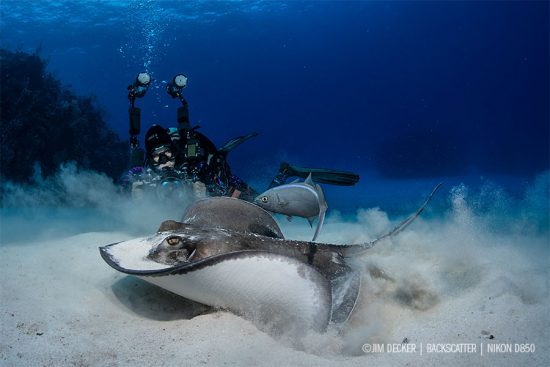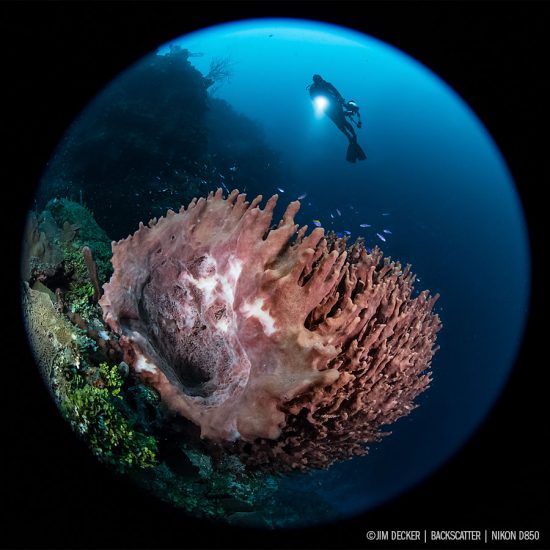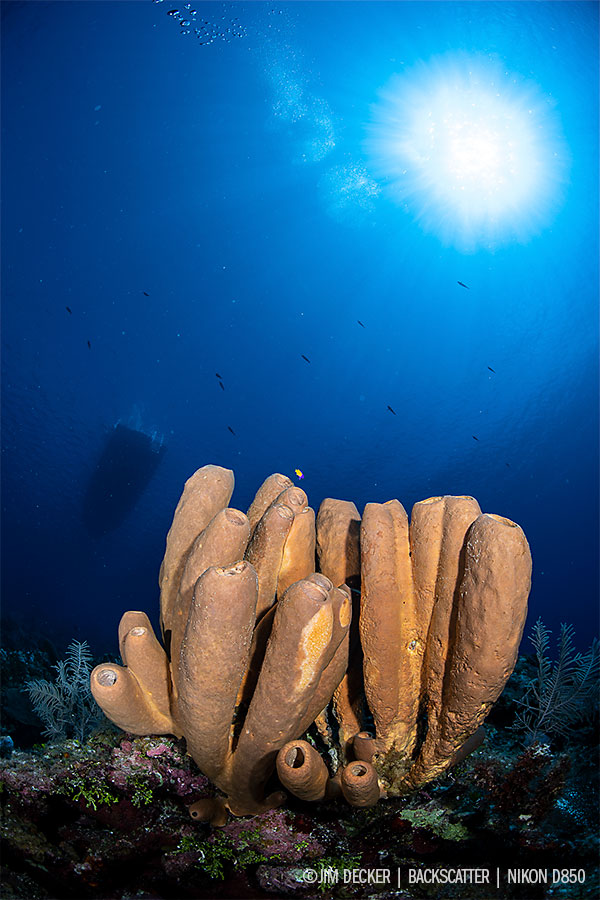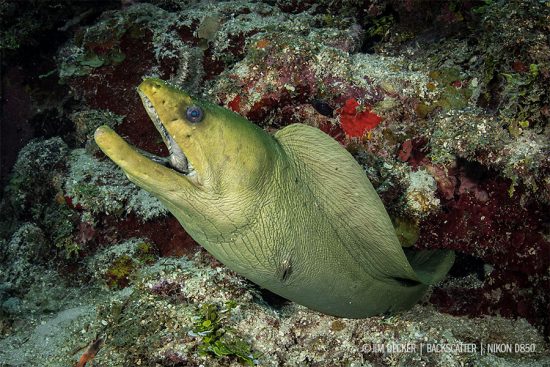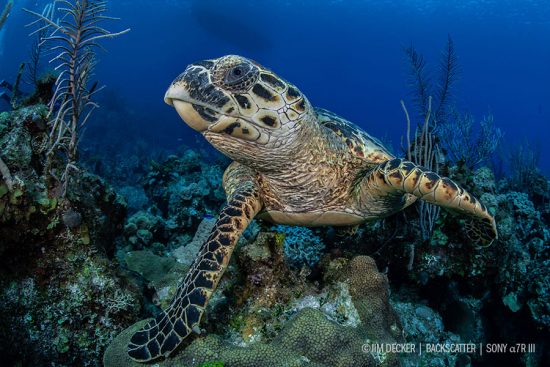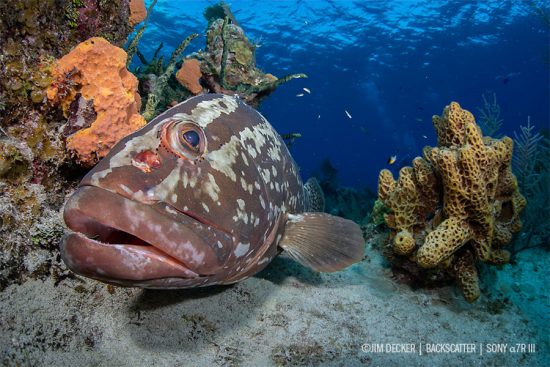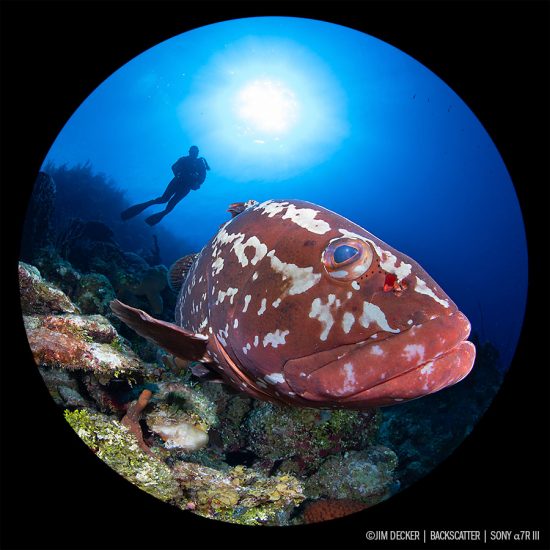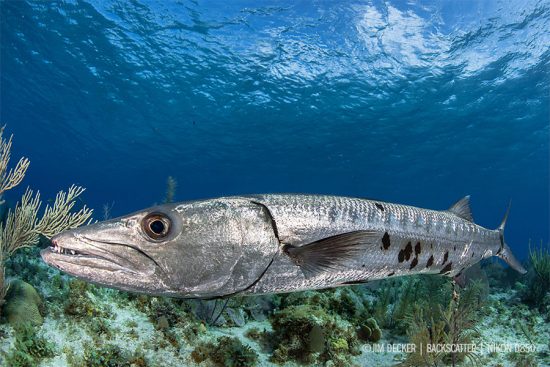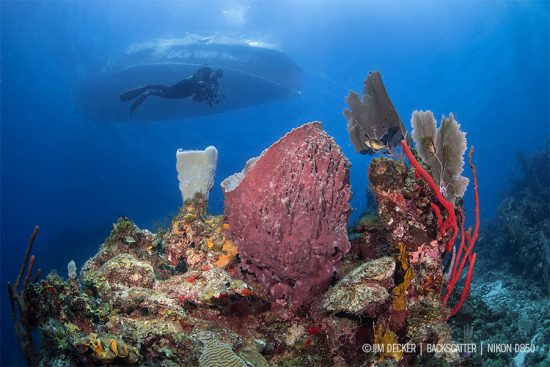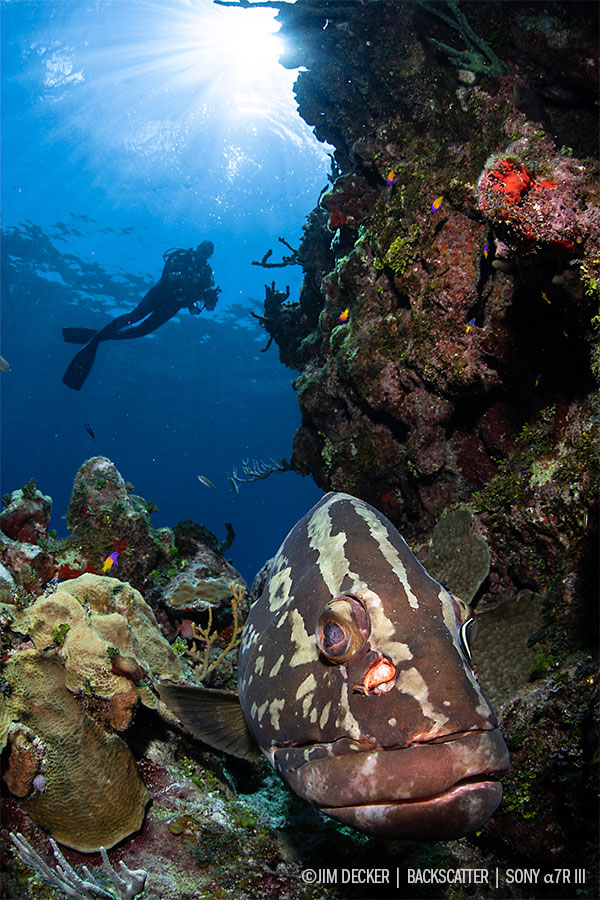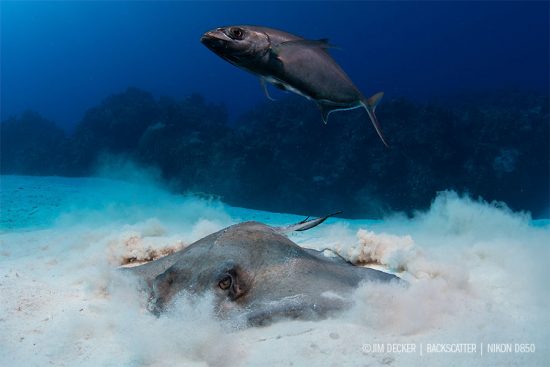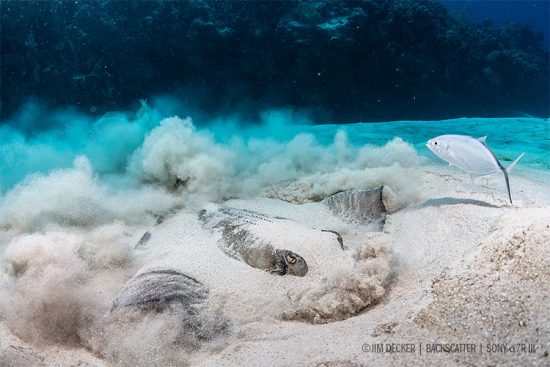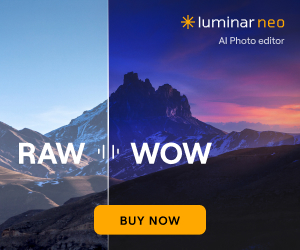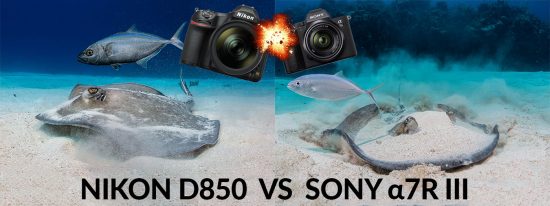
Nikon D850 vs. Sony a7R III underwater comparison is by backscatter.com – please check also the original article for more photos and some additional information:
Over the last few months, we’ve had a chance to test two of the world’s most popular professional camera bodies, the Sony a7R III and the Nikon D850, to gauge their strengths and weaknesses shooting underwater. Backscatter CEO Jim Decker and media producer Robin Dodd sat down to discuss camera features, lenses, and a few of the drawbacks of each. Check out the video below or scroll further and read on.
We’re trying out a bit of a new format with this video. It’s a long format but the discussion is filled with the kinds of details that us underwater photographers need to know. We hope you enjoy and please leave us some feedback letting us know whether you’d like to see more content like this!
Topic Time Codes
- 00:30 – Why are we looking at these two cameras?
- 00:50 – What makes them cool?
- 1:40 – Dynamic Range
- 2:42 – Autofocus (Wide-Angle)
- 5:46 – Autofocus (Macro)
- 8:07 – Manual Focus and Focus Peaking
- 10:43 – Shooting Speed
- 14:39 – Lens Choices
- 17:20 – Metabones Performance
- 22:17 – Field Test Report
- 23:59 – Field Test Report: Roatan
- 30:15 – Field Test Report: Little Cayman
- 34:26 – Video Performance
- 42:24 – Sony a7R III video examples and discussion.
- 46:20 – Favorite things and weak points.
- 49:01 – Which one is for you? (conclusion)
00:30 – Why are we looking at these two cameras?
With exceptional low light abilities, high megapixels and 4K full-sensor video, both the Nikon D850 and the Sony a7R III are the newest, most popular and best performing full-frame cameras on the market. We wanted to take a closer look at the specs and features to help buyers figure out which pro-level camera is right for them.
00:50 – What makes them cool?
The Nikon D850 records 45.7 megapixels while the Sony a7R III clocks 42 megapixels. Both bodies excel in low-light conditions and both have amazingly accurate and intelligent autofocus systems. These specs mean both cameras are capable of producing great results for underwater photographers.
1:40 – Dynamic Range
With ISO 64, the Nikon D850 has a slight edge over the Sony a7R III’s minimum ISO of 100. This means the Nikon D850 features 2/3rds more stop of dynamic range, which helps preserve additional detail in the highlights and shadows of the image. This helps underwater photographers who often shoot bright sunballs or dark shadowy reefs.
2:42 – Autofocus (Wide-Angle)
Both above and below the surface, both cameras offer exceptional autofocus systems. For wide-angle shooting, both cameras are able to intelligently and accurately pick focus points on underwater subjects. While normal wide-angle shooting shouldn’t be a challenge to any pro-level camera body, close focus wide-angle, with subjects inches from the lens, can force the camera’s autofocus system to work harder to pick out proper autofocus points.
5:46 – Autofocus (Macro)
In underwater photography, autofocusing during macro shooting is the most challenging test for a camera’s focusing system. We found the Nikon D850 could handle the narrow depths of field with snappy and responsive autofocus. Even with a diopter, the Nikon D850 was able to catch focus on tiny subjects. With slow selection and a tendency to hunt, the Sony struggled in this realm, forcing us to switch to manual focus for most macro applications.
Nikon D850 with Nikon 105mm VR Lens | 1/250 sec | f/22 | ISO 100 | 105mm
Sony a7R III with Sony 90mm Lens | 1/160 sec | f/22 | ISO 160 | 90mm
8:07 – Manual Focus and Focus Peaking
Nikon did add a focus peaking feature to the Nikon D850, however it does not work during 4K video, or during stabilized 1080HD, or with a whole other host of limitations. With the Sony a7R III, focus peaking can be enabled through the LCD screen or the electronic viewfinder, which is not an option with the Nikon D850‘s optical viewfinder. The Sony EVF also allows a photographer to image review without moving your face from the camera, which is especially beneficial when shooting macro in awkward positions.
10:43 – Shooting Speed
The Sony a7R III can blast off shots at 10 frames per second. The Nikon D850 is a tad slower at 7 frames per second. With the limited recycle time of strobes, this speed isn’t applicable in most shooting conditions underwater. Both cameras have a deep buffer depth, so shooters can tap the shutter as fast as possible with no lag. One downfall of the Sony a7R III was to revert out of image review, you have to tap the shutter, which adds an extra step.
14:39 – Lens Choices
The Nikon 8-15mm fisheye lens is our top wide-angle option, but the Nikon 16-35mm is another great route, especially for skittish subjects like sharks. While Sony does offer a Sony 16-35mm, Sony has yet to release a dedicated fisheye lens. This is easily solved with the new Metabones adapter for Canon lenses, allowing the use of the Canon 8-15mm fisheye lens. Lens adapters, like the AOI UWL-09 PRO or Nauticam WWL-1, are our favorite wide-angle options. With the Nikon 105mm VR f/2.8G and Sony 90mm f/2.8 Macro G OSS, both brands have excellent macro glass.
17:20 – Metabones Performance
The new Metabones fifth generation adapter allows Canon lenses to be used on Sony’s full-frame mirrorless cameras. In the past, the adapter frequently caused focusing problems or other issues, but the Sony a7R III’s autofocus can now easily handle the off-brand lenses and the insanely close focus the fisheyes offer. The Metabones 5th generation now opens up a whole new wide-angle arena for the Sony a7R III.
22:17 – Field Test Report
We’ve tested both cameras extensively. Backscatter CEO Jim Decker discusses some of the trips and conditions where he’s tested these two bodies.
23:59 – Field Test Report: Roatan
A rainy trip to Roatan Roatan challenged the Nikon D850’s and the Sony a7R III’s low-light ability and white balance. We were impressed with the clean blues and bright, grain-free images. The Sony also handled the conditions well, even though the lens selection was limited.

Roatan’s Mr. Bud wreck allowed two similar shots to be taken with two different wide-angle options for the Sony a7R III and the Nikon D850. Keep in mind, these photos were taken on different days. The day when we shot the Sony a7R III was much darker, yet the camera was able to easily pick out a focus point.
Nikon D850 with Nikon 8-15mm Lens | 1/250 sec | f/8.0 | ISO 200 | 15mm
Sony a7R III with Sony 28mm & AOI UWL-09 PRO Lenses | 1/80 sec | f/8.0 | ISO 400 | 28mm
30:15 – Field Test Report: Little Cayman
With excellent visibility and a host of wide-angle subjects, both camera bodies waltzed through the shooting conditions. The Nikon proved its proficiency in color and the massive RAW file sizes came in handy in post. With the combination of the Metabones adapter, the Sony showed its merit in close focus wide-angle. We felt that the cameras are very near equal in terms of their underwater wide-angle image quality.
34:26 – Video Performance
The Nikon D850 made significant improvements to Nikon’s video capabilities, which in the past have been comparatively under-performing. On the other hand, Sony continued their steady rise in video performance, adding the ability to white balance over 9900K. Both cameras can do 4K full-sensor video with the option of cropping the size, which we found to be a useful feature for fisheye zooms lenses and macro lens.
We liked the way the Nikon held different settings for photo mode and video when switching between the two. But we did find a few issues with the video mode. The camera had some trouble white balancing below 50 feet. This is still a big improvement over previous Nikon bodies, but not as good as Canon’s color. The lack of a meter in video mode forced us to find other ways to maintain our exposure. Lastly, the autofocus often hunted and failed to lock onto subjects while rolling video.
Nikon D850 Underwater White Balance Test:
42:24 – Sony a7R III Video Examples and Discussion
Strangely, the Sony a7R III top notch full frame performed well under the tricky conditions in Roatan. But in the gin-clear waters of Little Cayman, the camera struggled to produce accurate blues. Though the purple hues were easily corrected in post, the camera did not capture clean in-camera color.
Sony a7R III Underwater White Balance Test:
Sony a7R III Underwater White Balance Test with Post Color Correction:
46:20 – Favorite things and Weak Points
Among our top features of these two top dogs, we liked the excellent autofocus, sharp image quality, and video improvements. We felt the Nikon D850 was slightly superior to the Sony a7R III in overall image quality. We feel that for wide-angle, they’re both really great cameras and that they’re nearly equal in this realm. Though improved, video modes on both cameras continue to lack features and quality color rendering. We felt the Nikon wins the award for “most improved” white balance.
49:01 – Which One Is For You?
To figure out which camera to choose, we recommend you consider what type of photography or videography you’re looking to do. For wide-angle photography, we recommend the Nikon D850 for its optical viewfinder and the extra 2/3 stop of shadows and highlight detail, which makes great sun balls. For macro photography, it depends on your shooting style. We like the Nikon D850 if you have no issue seeing critical focus through the viewfinder. If you need assistance with finding focus, the Sony a7R III’s focus peaking and electronic viewfinder is the way to go. We’re positive that both cameras are capable of producing excellent imagery.
Nikon D850 Pros:
- Our pick for best still image quality overall, only by a hair
- High buffer capacity and fast frame rate ensure fast shooting speed
- Excellent low light ability
- Full range of wide-angle and macro lenses
- Highly improved underwater white balance from past generations
- Full-sensor 4K video with the ability to crop
- Holds different settings in video and stills modes
- Optical viewfinder makes composing wide-angle shots easier
Nikon D850 Cons:
- No useable autofocus while shooting video
- Lack of a meter in video mode
- Focus peaking not usable in certain settings
Sony a7R III Pros:
- 42.4MP sensor produces the best still image we’ve ever seen from a mirrorless camera
- Worry-free wide-angle autofocus performance – it’s fast and accurate
- Full-sensor 4K video with the ability to crop
- Canon lens compatibility with a lens adapter
- Excellent low light ability
- Excellent focus peaking for when your eyes can’t see critical focus
Sony a7R III Cons:
- White balance is improved, but not great. However it is recoverable through post-processing
- Electronic viewfinder makes foreground difficult to see when shooting wide-angle
If you have an interesting idea for a guest post, you can contact me here.
